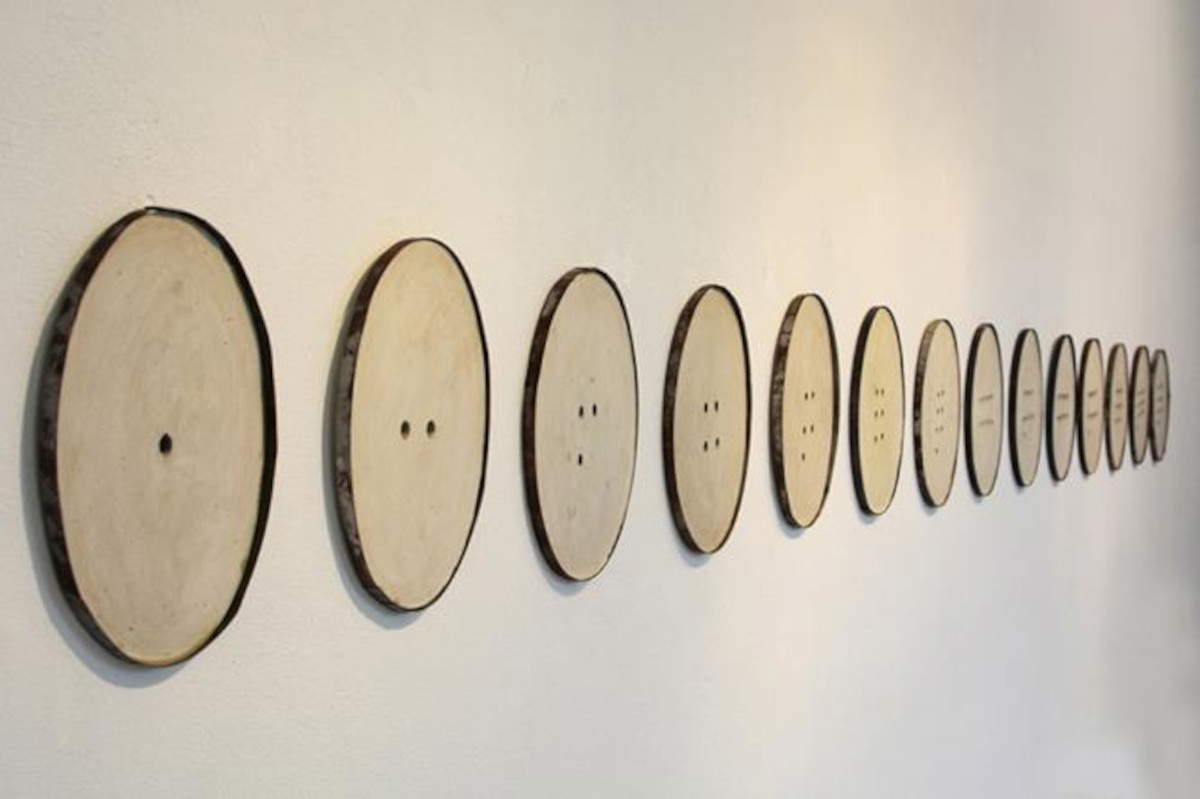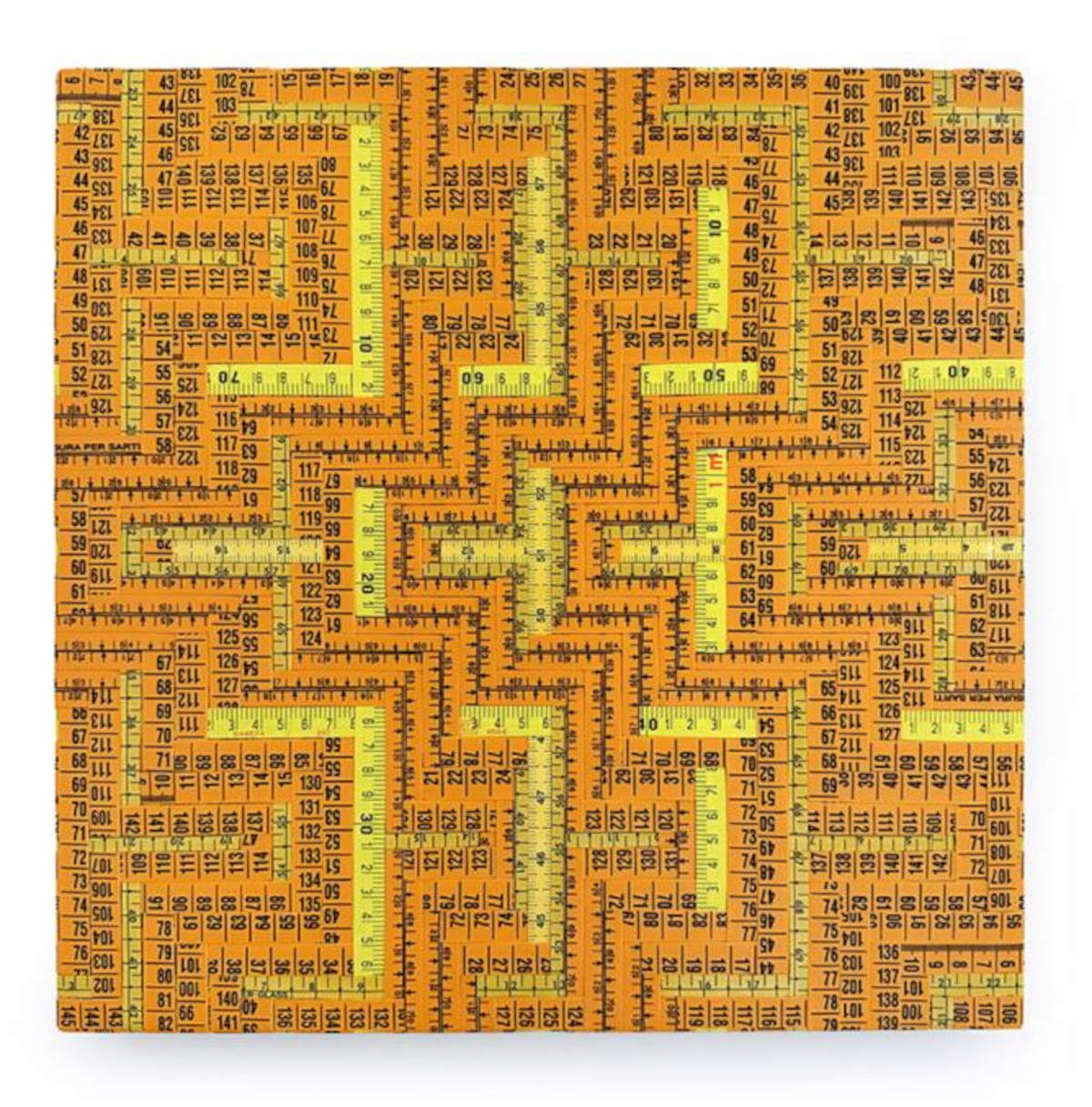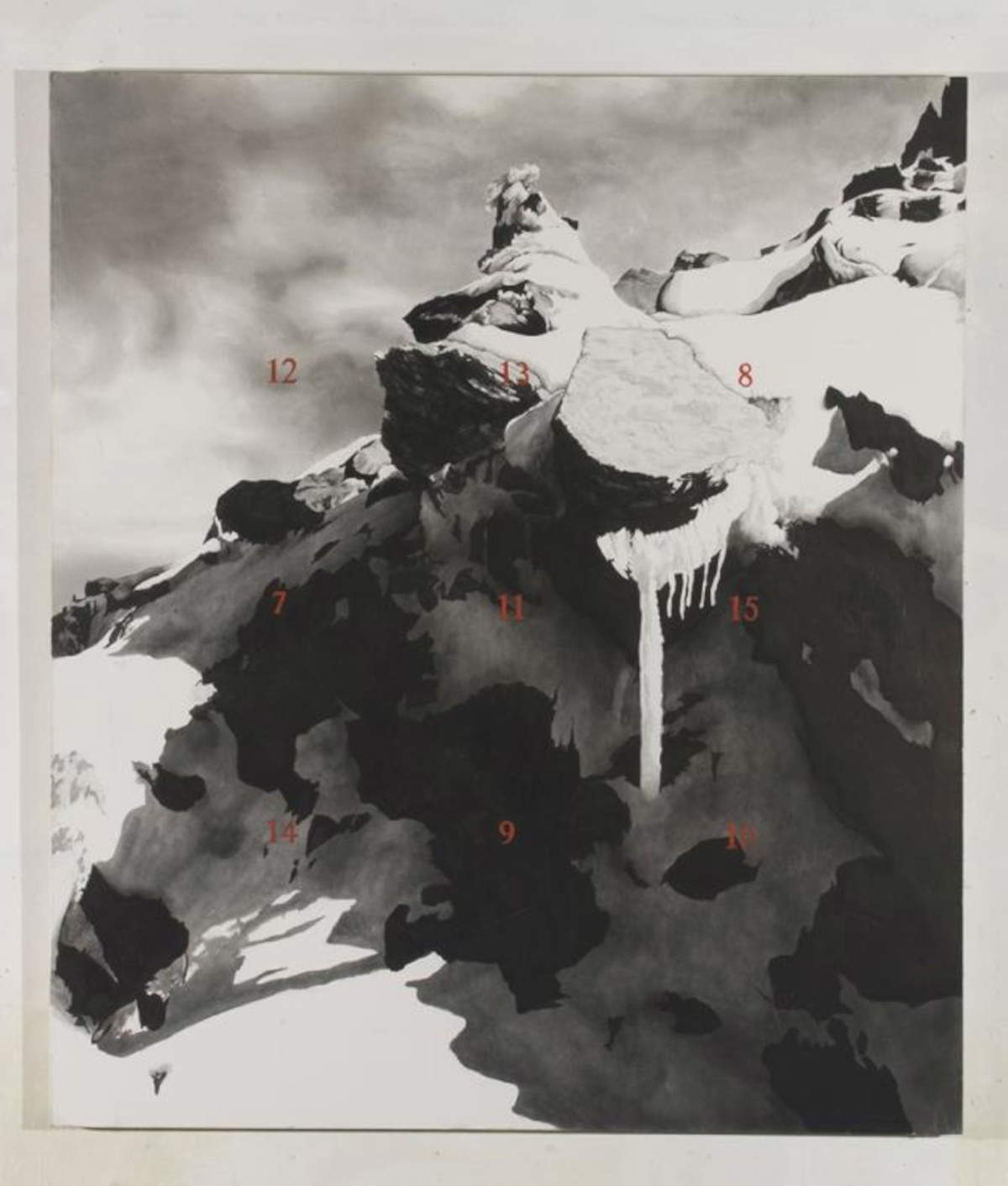In Aosta, an exhibition explores how the number has been used in art over the past six decades
The exhibition ArteNumero. Artists and Number between the 20th and 21st Centuries, curated by Angela Madesani and produced by Nomos Edizioni. The exhibition aims to offer an overview of how number has been used inart over the past sixty years, through more than seventy works by leading Italian and international artists.
The exhibition is divided into five sections, each dedicated to a dialogue between number and another entity.
The first section of the exhibition, dedicated to the relationship between number and time, features works by some of the most internationally renowned conceptual artists. These include On Kawara, with books and postcards exploring an existential dimension suspended between the personal and the collective. Luca Pancrazzi’s monumental work, 24 Hours, pays homage to drawing as a daily practice of dedication and care for one’s work. The link between number and time also emerges clearly in Elena Modorati’s refined creations. Two tapestries of different sizes, calendars, books and postcards by Alighiero Boetti, exploring themes related to time, are also on display. A minute photograph by Franco Vimercati serves as a manifesto of the core of his research, focusing on time and its measurement. In the same room, there are five works by Roman Opalka, which include photographs and Travel Cards. From 1965 until 2011, the Polish artist developed one of the most significant works on the theme of time. Carlo Valsecchi ’s photographs present numbers represented by red LEDs, set in an ethereal and abstract space. Finally, Daniela Comani’s work, Sono stato io. Diary 1900-1999, is presented as a 20th-century diary, in which the artist seems to live each narrated event in the first person.
In the second section of the exhibition, the link between number and narrative is explored through a series of significant works. These include a Linea by Piero Manzoni, where the artist proposes an agreement with the viewer, inviting him to accept the length of the line as stated by him, thus establishing a dialogue between artistic truth and perception. Elisabeth Scherffig presents two works in which number becomes a tool for counting and documenting: stone fragments from a Spanish quarry and numbered casts of signatures found in the great mosque of Cordova. In 1,2,3,4 of 1974, Antoni Tàpies uses numbers to narrate the tragic historical events of Spain, his home country. Numerical calculation takes on a personal dimension in Elisabetta Casella’s secular Via Crucis, made with scagliola, where small photographs appear on the back of the works. One of the most emblematic works in the exhibition is Joseph Kosuth’s Five Fives (to Donald Judd), a 1965 neon work composed of numbers, dedicated to the celebrated artist Donald Judd. Pietro Bologna’s Remedies, made in 2002, consists of detailed enlargements of psychotropic drug package inserts, modern symbols, produced with a photographic technique specially developed for this project. Peter Dreher, a German conceptual artist, painted the same glass with the same light from 1974 to 2020, numbering each painting. The initial idea was to create an invisible painting, a kind of utopia that the artist managed, in part, to realize. Paolo Pessarelli, on the other hand, uses the number-filled pink pages of the Financial Times to create works of various kinds, both on the wall and on the floor, where the numbers strung together become instant reflections of stories and lives. These pages serve as supports for images of forgotten faces, retrieved from antique markets, bringing to light fragments of past existences. Finally, the work in the exhibition by Edward Kienholz expresses an economic cipher, symbolizing and critiquing contemporary capitalist society, bringing its so-called “values” to a climax.
The third section of the exhibition explores the link between number and space, presenting works that investigate this relationship in innovative ways. A highlight is the documentation of the performance Per un otto coricato by Milanese artist Cioni Carpi, presented during the Bologna Performance Week in 1977. Also of interest are the works of Andrea “Bobo” Marescalchi. Fascinated by mathematics and numerical symbology, Marescalchi began since the late 1980s to create works in which the objectivity of the image is intertwined with playing cards and geometric shapes. These elements are overlaid with bright colors, such as red and yellow, on a base painting executed in India ink in shades of black and gray, creating a synthesis between arithmetic rigor and artistic expression. The section also hosts Twentysix Gasoline Stations, a conceptual work by Ed Ruscha, documenting the artist’s journey from Los Angeles to Oklahoma City along historic Route 66.
In the fourth section of the exhibition, number is explored in its relationship to sign and image, taking on a semiotic significance. Here we find works ranging from the pop creations of Ugo Nespolo to the photography of Luigi Ghirri, represented by one of the last works in the Piazza Betlemme cycle. The conceptual world of Maurizio Nannucci is also present, along with the refined sculptures of Robert Tiemann, part of the prestigious Panza di Biumo collection. Hanne Darboven is represented with two precious papers, in which numbers become a means to reach music, the only true discovery of humanity according to the artist. Mimmo Iacopino’s canvases, made with tailor’s yardsticks, add a playful touch to the section, while Vincenzo Merola, the youngest of the artists in the exhibition, uses randomness and the rolling of dice to determine the colors in his cards.
The fifth and final exhibition section, on the other hand, focuses on the relationship between number and arithmetic, presenting works by conceptual artists such as Bernar Venet, one of the main authors to have explored mathematics with great awareness in the 1960s, and Mel Bochner, who investigates the intersections between language and mathematics. Prominent among the works on display is Pebbles by Laura Grisi, a large 1973 composition consisting of one hundred and fifty color photographic images of stones, arranged in small groups. Also in this section is a large neon work by Mario Merz, part of the series dedicated to the Fibonacci sequence, and three works by Vincenzo Agnetti, who over the years has deepened the link between mathematics and language. Beatrice Pasquali closes the section with the installation Era solo un gallo, tesoro, consisting of seven small paintings that reflect on the theme of ars combinatoria.
The exhibition is open daily from 9 a.m. to 7 p.m.
Tickets: Full 8 euros, reduced 6 euros. The exhibition is included in the Abbonamento Musei circuit.
For info: www.regione.vda.it



 |
| In Aosta, an exhibition explores how the number has been used in art over the past six decades |
Warning: the translation into English of the original Italian article was created using automatic tools. We undertake to review all articles, but we do not guarantee the total absence of inaccuracies in the translation due to the program. You can find the original by clicking on the ITA button. If you find any mistake,please contact us.




























